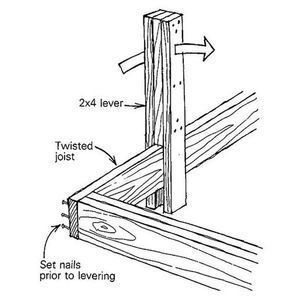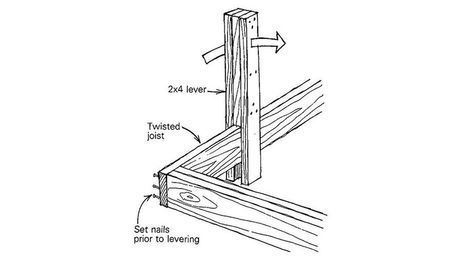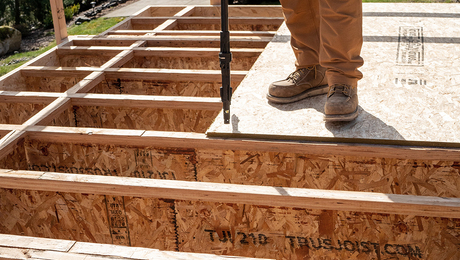Q:
I run a renovation business, and I have often wanted to try using end-grain blocks as flooring in certain areas such as entries or stair landings where wear is a big concern. Am I crazy? Have you ever heard of doing such a thing?
—William Mack, from “Breaktime,” FHB’s on-line discussion group
None
A:
Merle Adams of Big Timberworks, a design/build company in Gallatin Gateway, MT, replies: There is plenty of historical precedent for the use of end-grain floors. Foundries, factories and machine shops built in the early 1900s in the Rust Belt often used 2-in. thick blocks dry-laid over hard-packed granular fill. The advantages of end-grain flooring in these applications were many: End grain of any species is hard and resistant to impact, the blocks could absorb oil from the factory machines without becoming slippery, the floors could be patched easily just by replacing blocks, and because of the many joints between blocks, an end-grain floor flexes easily under the weight of heavy machinery. A colleague of mine reported seeing a street in Cuba made of wooden end blocks.
We became interested in end-block floors because our timber-framing business uses old-growth recycled timber and because we were ending up with many scraps and end cuts in the process. End-grain flooring seemed like a great way to continue the recycling process.
Our blocks tend to be large (4×6 to 8×10), which greatly reduces the labor needed to cut and lay the blocks. Also, the end grain of bigger blocks is really interesting to look at because of the growth-ring patterns.
We generally use blocks free of heart-center wood and free of the unstable juvenile wood from the outside of the tree to minimize checking and movement. Most of the blocks we use are 3/4 in. to 1 in. thick and are dry (a moisture content of 6% to 8%) before laying.
Mainly, we’ve laid blocks over a subfloor using a floor adhesive that works with wood and a notched trowel. We’ve had good luck with DAP Parquet Adhesive (800-543-3840). The idea is to bed each block in glue so that it’s fully supported once the glue dries. We generally lay the blocks as tightly as possible.
There are always gaps from seasonal shrinkage and a lack of uniformity in the blocks. So after sanding and finishing the floor with either an oil or a polyurethane, we mix a slurry of sawdust and floor-finishing oil such as Watco (800-635-3286) to fill gaps (we have also heard of people using ground-up cork and oil as a gap filler).
Sanding end grain is difficult, so we just try to knock down the edges of the blocks rather than sanding them perfectly flat. The result is more of a cobblestone look, which we prefer. It’s probably a good idea to avoid putting end-grain flooring in high-moisture areas because the blocks tend to absorb moisture. The result would then be excessive buckling and checking in the floor.
The upside of end-grain flooring is its toughness and durability as well as its visual appeal. The worst part about end-grain flooring is that making the blocks can be painstakingly tedious unless you’re set up with the proper tools.

























